Number Sense Teaching Resources
Browse printable number sense worksheets, hands-on maths activities and more teacher resources created by teachers for teachers like you!
These resources are aligned with the Australian Maths Curriculum, and each was created by teachers with teachers — and students — in mind to help build foundational maths skills in ways that engage and excite students about numbers!
Want to learn more about number sense? Read on for a primer from our teacher team, including a definition of number sense, how to assess this important maths skill and more!
What Is Number Sense?
In the most basic sense (no pun intended), number sense refers to a student's intuitive understanding of numbers and their relationships. It includes the ability to estimate and compare quantities, understand numerical patterns and relationships and make reasonable judgments about the accuracy of calculations.
When students show an understanding of numbers, their size, relationships,and how they are affected by the four mathematical operations, what they're really showing is their number sense.
In an educational setting, building number sense is closely related to other foundational skills such as problem-solving, critical thinking and logical reasoning. As our students get older, it will become a crucial skill for daily life they will use to manage finances, calculate time and make decisions based on numerical information.
Teach Starter Teacher Tip: Although the names may seem interchangeable, it's worth noting that number sense is not the same as mathematical fluency or memorisation of algorithms, but rather a deep understanding of the underlying concepts and relationships between numbers.
When Does Number Sense Develop?
There is no single year level when we're teaching students number sense — instead, it continues to develop and become more sophisticated as students progress through primary school.
Research suggests that babies as young as 6 months old can distinguish between small and large numbers of objects, and by prep, students are already working on number sense as they begin to learn counting and one-to-one correspondence. At this level, they're also beginning to develop an understanding of quantity and relative size — both key to overall number sense.
Number sense will continue to grow in primary school as students become more adept at recognising and using numbers to solve problems, and it continues into high school and — for many students — into university.
Assessing Number Sense
When we assess students for their number sense skills, there are certain mathematical concepts that they should have under their belts. These include:
- Ability to Recognise Missing Numbers in a Pattern —When kids can fill in missing numbers in a sequence, they're showing that they can make connections between numbers and develop an understanding of the relationships between them.
- Ability to Use Maths Mentals — Students with number sense can use maths mentals to solve problems involving the four basic operations.
- Ability to Engage in Systematic Counting — Children who can count systematically can more easily understand the relationships between numbers, including number magnitude, patterns and sequences.
- Ability to Subitise Numbers — Students can use visual clustering skills to instantly recognise how many objects are in a group without physically counting them.
- Ability to Relate Numbers to Real-World Problems —For example, a student may understand that '3' means 'three objects' or 'three days' or 'three dollars.'
- Ability to Compose and Decompose Numbers — Students use number sense when they break down numbers and put them back together. For example, a student who can break down the number 10 into 8 and 2, then add the two back together to again make 10, is using number sense.
- Plus Plan
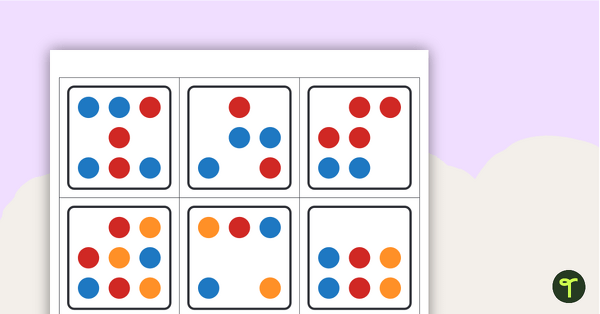
Subitising Dice - Numbers 1 to 9
Subitising is the process of immediately recognising how many items are in a small group.
- Plus Plan
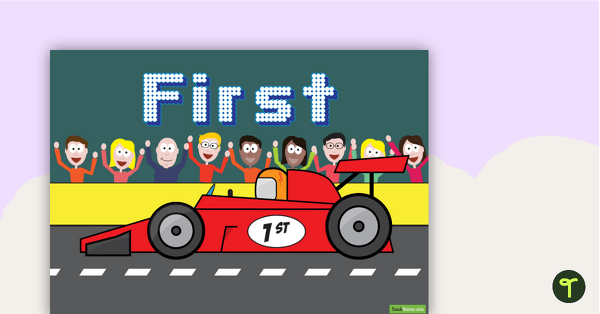
Racing Car Ordinal Numbers 1st - 10th
Racing cars with the number and the corresponding word for each ordinal number position.
- Plus Plan
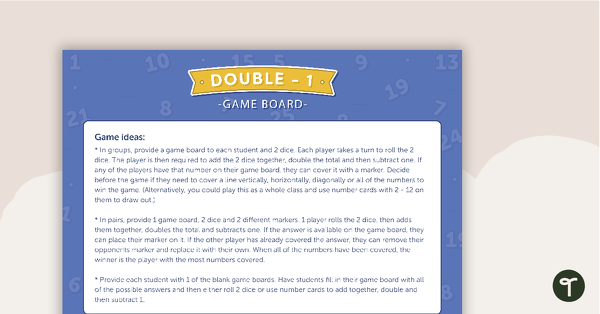
Double Minus 1 – Game Boards
30 game boards to use when working with near doubles.
- Plus Plan
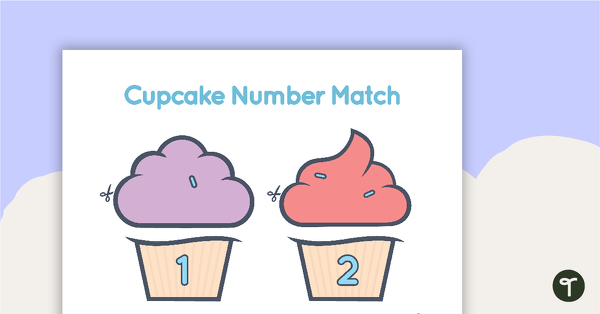
Numbers to 20 Cupcake Match-Up Activity
Use this match-up activity to consolidate your students' knowledge of numbers to 20.
- Plus Plan
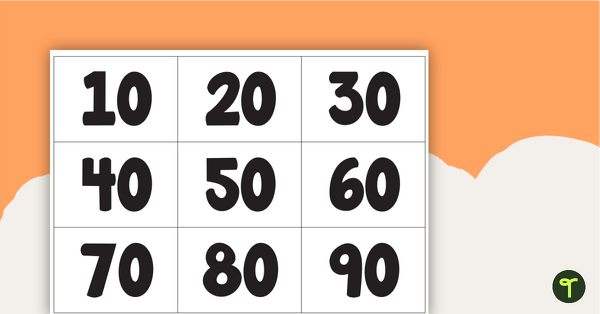
Numbers, Words and Tallies Match-Up Activity - Tens
A game to help your students understand numbers and all of the different ways they can be represented.
- Plus Plan
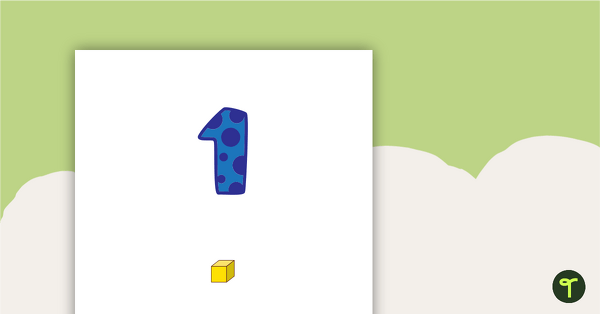
1-30 Number, Word and MAB Block Posters
Posters showing numbers 1-30.
- Plus Plan
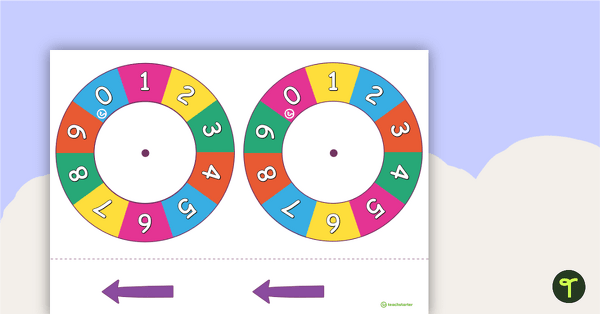
Learn and Play Spots - Simple Addition and Subtraction
Carpet rings perfect for velcro carpet dots, focusing on simple addition and subtraction of numbers.
- Plus Plan
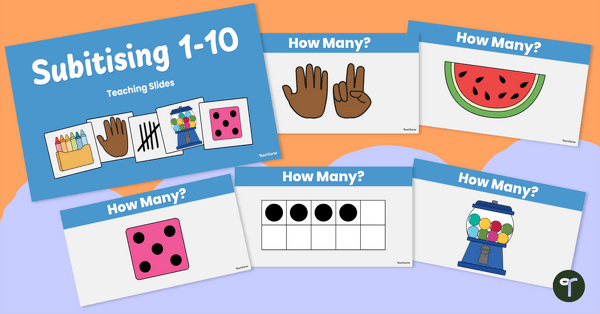
Virtual Subitising Card Deck
Display these virtual subitising cards to teach your students to instantly recognise quantities.
- Plus Plan
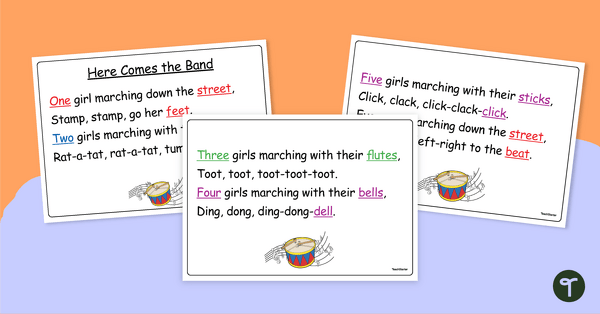
Here Comes the Band – Counting Rhyme Poster
Use the counting nursery rhyme “Here Comes the Band” poster to teach your students about numbers and rhyme simultaneously!
- Plus Plan
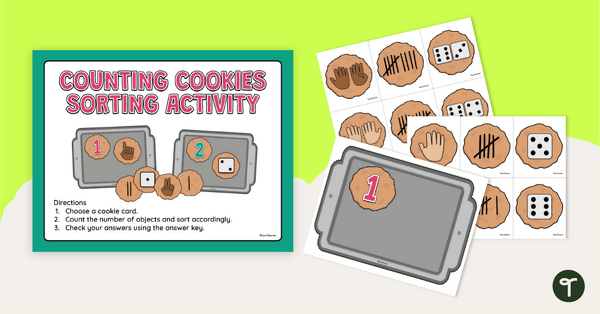
Counting Cookies Sorting Activity
Practise counting to 10 with various representations with this cookie sorting activity.
- Plus Plan
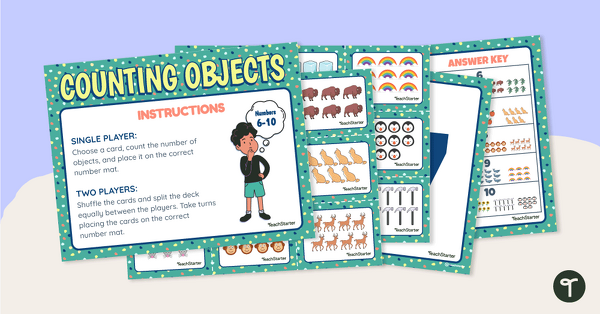
Counting Objects Sorting Numbers 6-10
Practise counting 6 – 10 objects with this colourful sorting activity.
- Free Plan
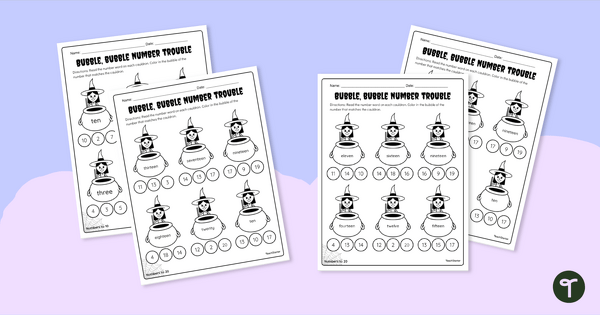
Halloween Number-Word Matching Worksheet
Match numbers and number words with a pack of Halloween printable maths worksheets for year 1.
- Plus Plan
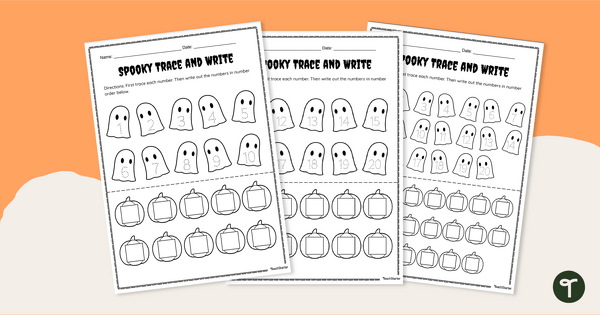
Halloween Tracing Numbers Worksheets
Trace and write numbers to twenty with a set of spooky Halloween tracing numbers worksheets.
- Plus Plan
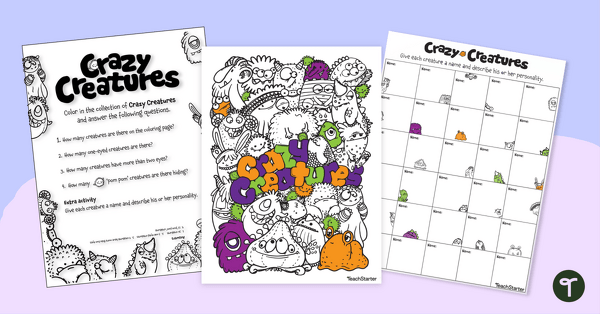
Crazy Creatures – Counting Worksheet
Bring a bit of (not-so) spooky counting into year 1 with a crazy creatures Halloween activity.
- Plus Plan
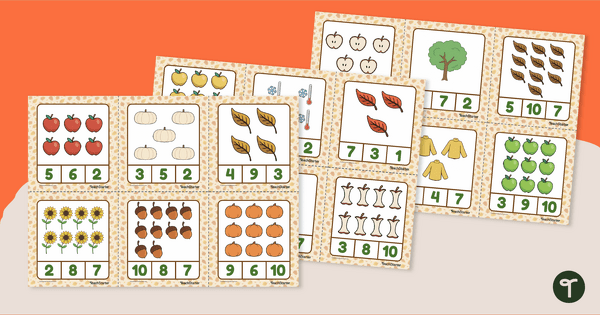
Autumn Counting to 10 Clip Cards
Practice counting objects with 18 autumn-themed counting to ten clip cards.
- Plus Plan
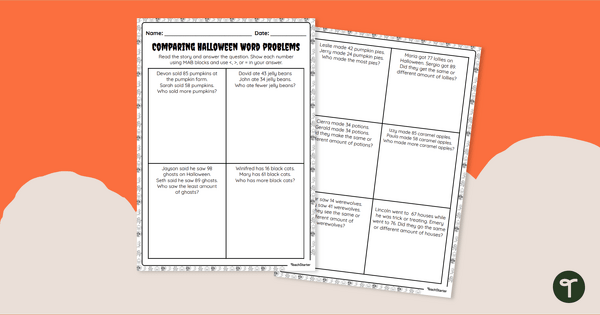
Comparing Numbers-Halloween Word Problems
Practise comparing numbers using MAB blocks with a Halloween Maths word problem worksheet.
- Plus Plan
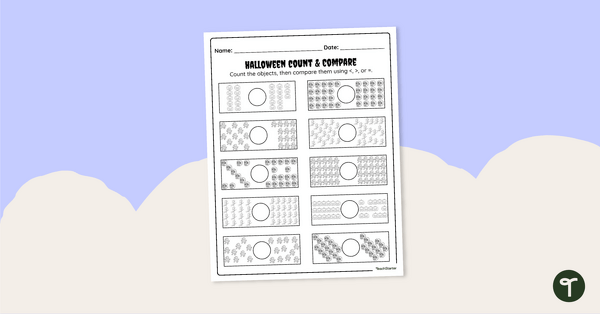
Halloween Comparing Numbers Worksheet
Have a spooktacular time practising number comparisons with a count and compare Halloween maths worksheet.
- Plus Plan
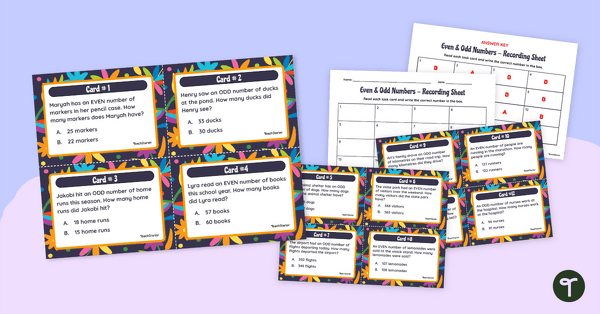
Even and Odd Numbers Task Cards - Word Problems
Identify odd and even numbers within word problems with a set of task cards.
- Plus Plan
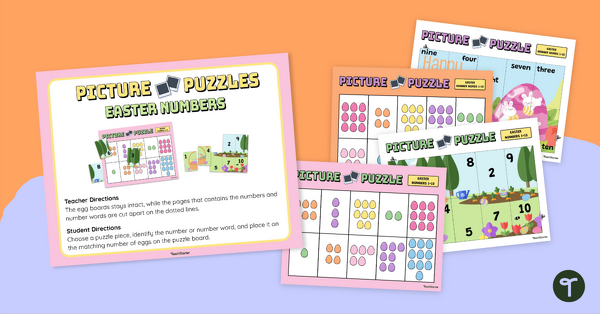
Easter Picture Puzzles - Numbers 1-20
Practise number recognition with this fun Easter puzzle activity.
- Plus Plan
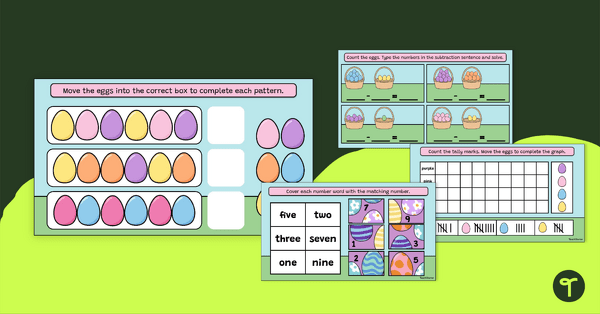
Easter Maths Digital Activities
Have some Easter fun + practise maths topics.
- Plus Plan
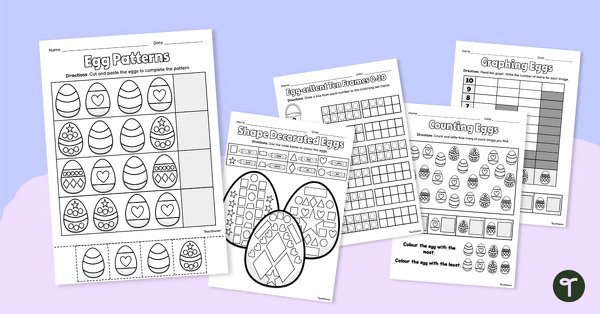
Easter Worksheets - Egg Maths
Practise a variety of early maths concepts with this pack of Easter worksheets.
- Plus Plan
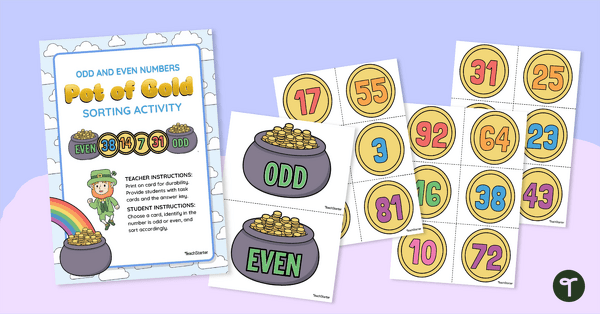
St. Patrick's Day Maths Activity - Odd and Even Number Sort
Sort odd and even numbers into their corresponding pots with a St. Patricks Day theme!
- Plus Plan
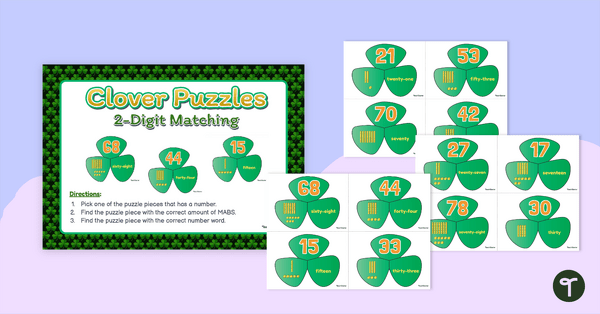
Number, Word and MABs Matching - Clovers
Practise place value of 2-digit numbers with this clover-themed puzzle.
- Plus Plan
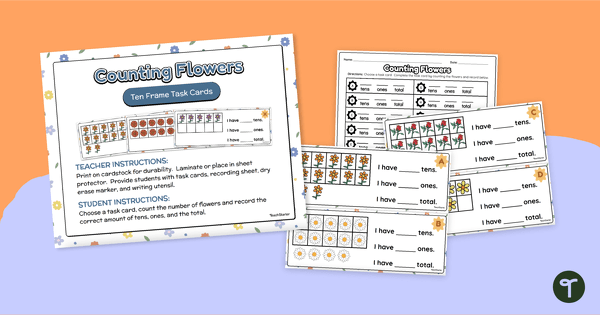
Tens Frames Counting Flowers Task Cards
Step up your students’ number recognition, counting and subitising skills with a printable set of Tens Frame task cards.
- Plus Plan
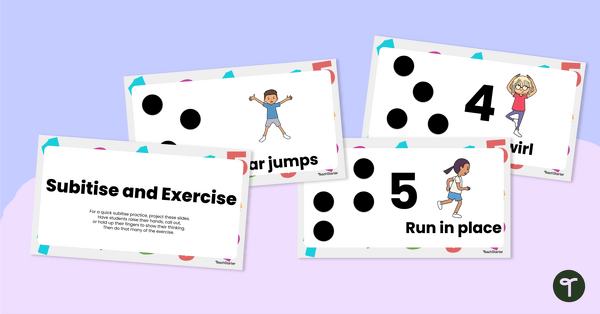
Subitise and Exercise
Get active with this subitise and exercise teaching brain break presentation.
- Plus Plan
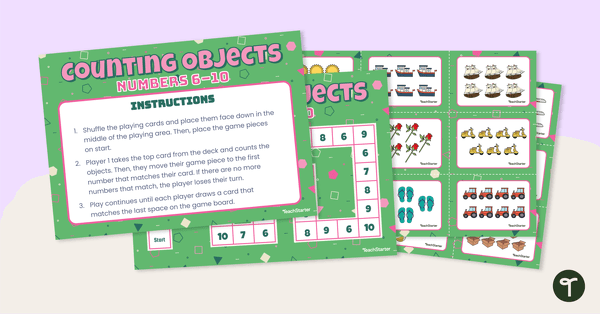
Counting Objects Board Game – Numbers 6–10
Practise counting to 10 with an engaging board game.
- Plus Plan
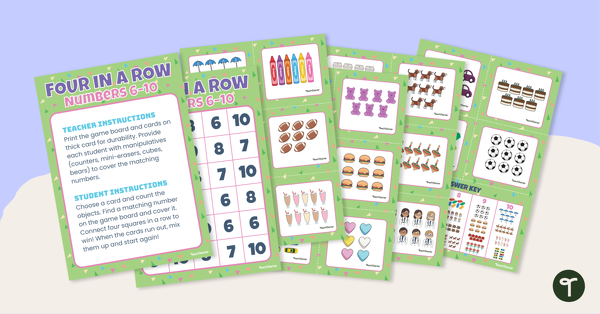
Four in a Row – Numbers 6–10
Match picture cards with numerals to practise counting to 10.
- Plus Plan
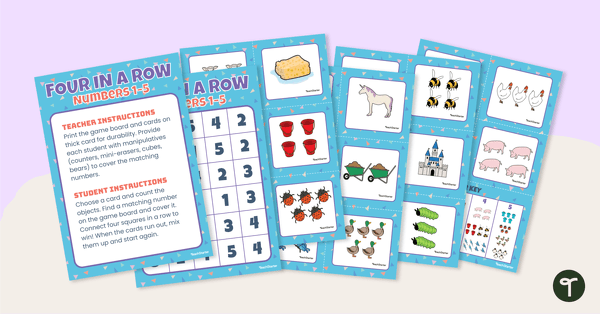
Four in a Row – Numbers 1–5
Match picture cards with numerals to practice counting to 5.
- Plus Plan
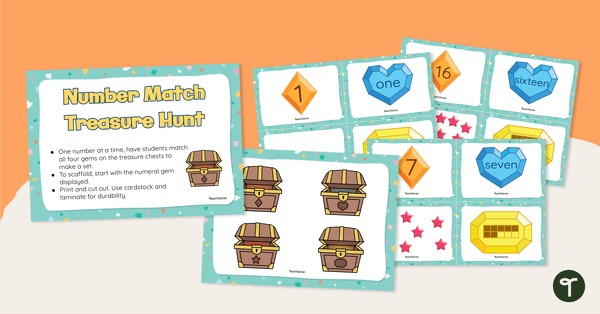
Number Match Treasure Hunt
Have students gather the treasure and make matches of numerals, quantities and number names with this match-up activity.
- Plus Plan
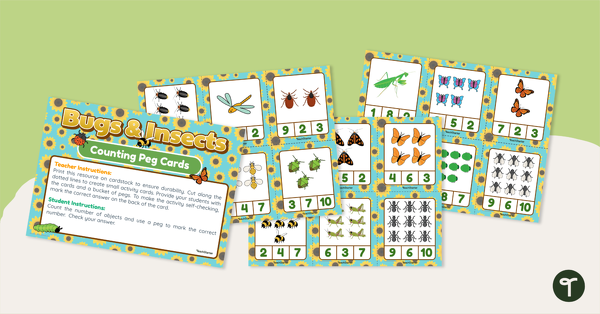
Counting Peg Cards – Bugs and Insects
Practice counting objects with a set of 18 insect-themed counting clip cards.
- Plus Plan
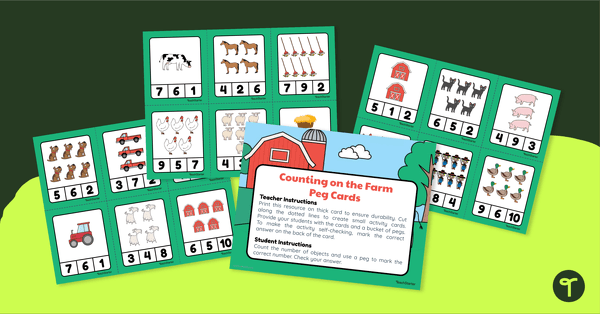
Counting Peg Cards – On the Farm
Practise counting objects with a set of 18 farm-themed counting peg cards.
- Plus Plan
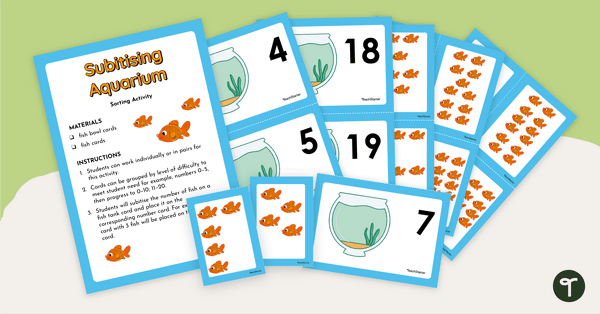
Subitising Aquarium – Sorting Activity
Practise recognising the quantity of a small group of objects with this subitising sorting activity.